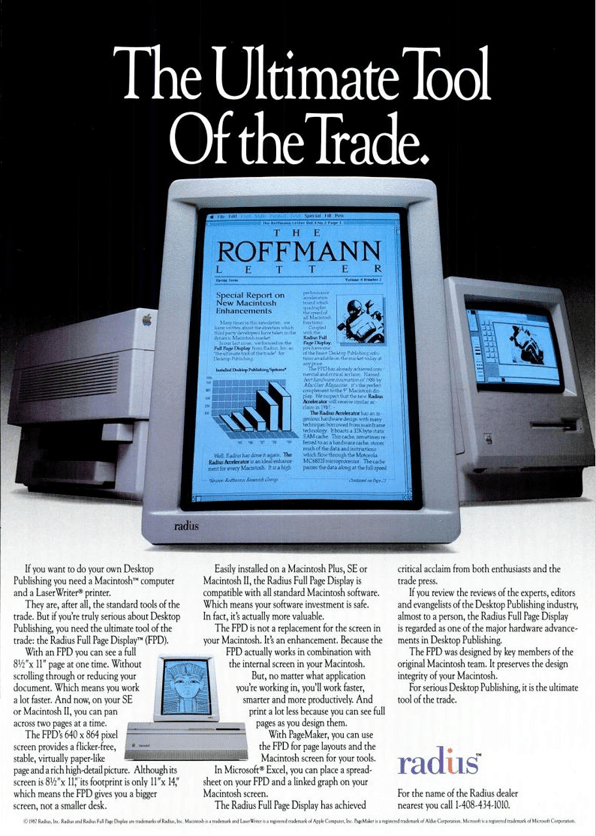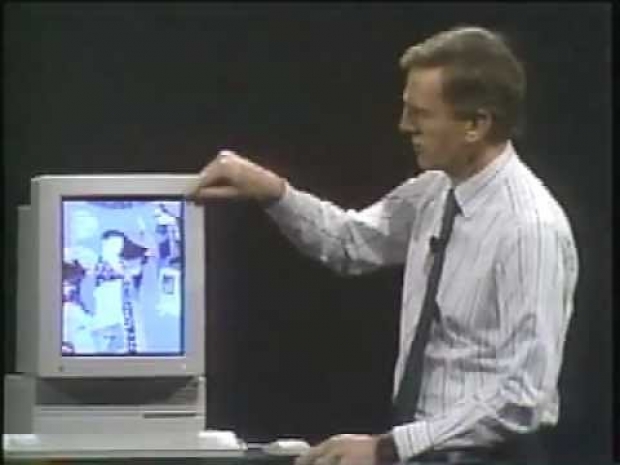According to the Cult of Mac, Mac Macintosh Portrait Display was proof that Apple was a risky game changer.
Released in 1989 it showed a full-page screen which made it ideal for layout artists doing desktop publishing. It cost $1,099 for the monitor plus $599 for an additional video card to run it, and could be used by any Macintosh. "The Macintosh Portrait Display is an early example of the supersized displays Apple would release years later”, enthused Cult of Mac.
The Macintosh Portrait Display offered a resolution of 640 by 870 pixels at a pixel density of 80 dots per inch. It boasted antiglare technology and a flat screen form factor.
“At the time, people viewed it as a quirky experiment from Apple with only limited applications. Today, it appears very clear that an elongated display was an innovation very much worth pursuing — seen most notably through the way we vertically view web pages on our iPhones. At the time, people viewed it as a quirky experiment from Apple with only limited applications. Today, it appears very clear that an elongated display was an innovation very much worth pursuing - seen most notably through the way we vertically view web pages on our iPhones.”
However, if the prospect of a commemorative 29-year anniversary is not significant enough, you might want to consider some other issues that Cult of Mac glosses over.
Firstly, like many of Apple products, It was a good idea that Apple didn’t invent. It was nicked it from a company called Radius which sold gear for Macs. The Radius Full Page Display shipped in 1988, a year before the Macintosh Portrait Display. Radius dropped the price of its monitor to $895 when Apple ripped off its idea.

The old Sony 35-word processors at around the same time used vertical monitors. Great for WYSIWIG page formatting with headers and footers. The only downside of the Sony 35s were that they took hours to do a spell check.
Another important thing Cult of Mac glosses over is that Apple’s design was total pants. Apple had to deal with complaints from disgruntled uses that it was unable to handle the slightest magnetic field without the screen corrupting. When we talk about slight, we mean if you put any form for metal near it the screen would bend into unusual shapes. A metal chair was enough. It also distorted in the presence of fluorescent lights, coffee machines and other computers.
Unlike today, where Apple would deny that there was anything wrong and blame the user for the problems, it fessed up.
“These objects cause dynamic raster distortion — that is, movement or jitter of the image”, Apple told us. In those days it didn’t really care if it stuffed up, dumb fanboys, like my former boss would buy it anyway.
The Macintosh Portrait Display lasted until December 1992 when it was killed off.
While the Tame Apple Press is doing its best to make this turkey an example of Apple thinking out of the box before anyone else, they might like to ask a few people who had to use the thing before promoting it as Apple being innovative.




